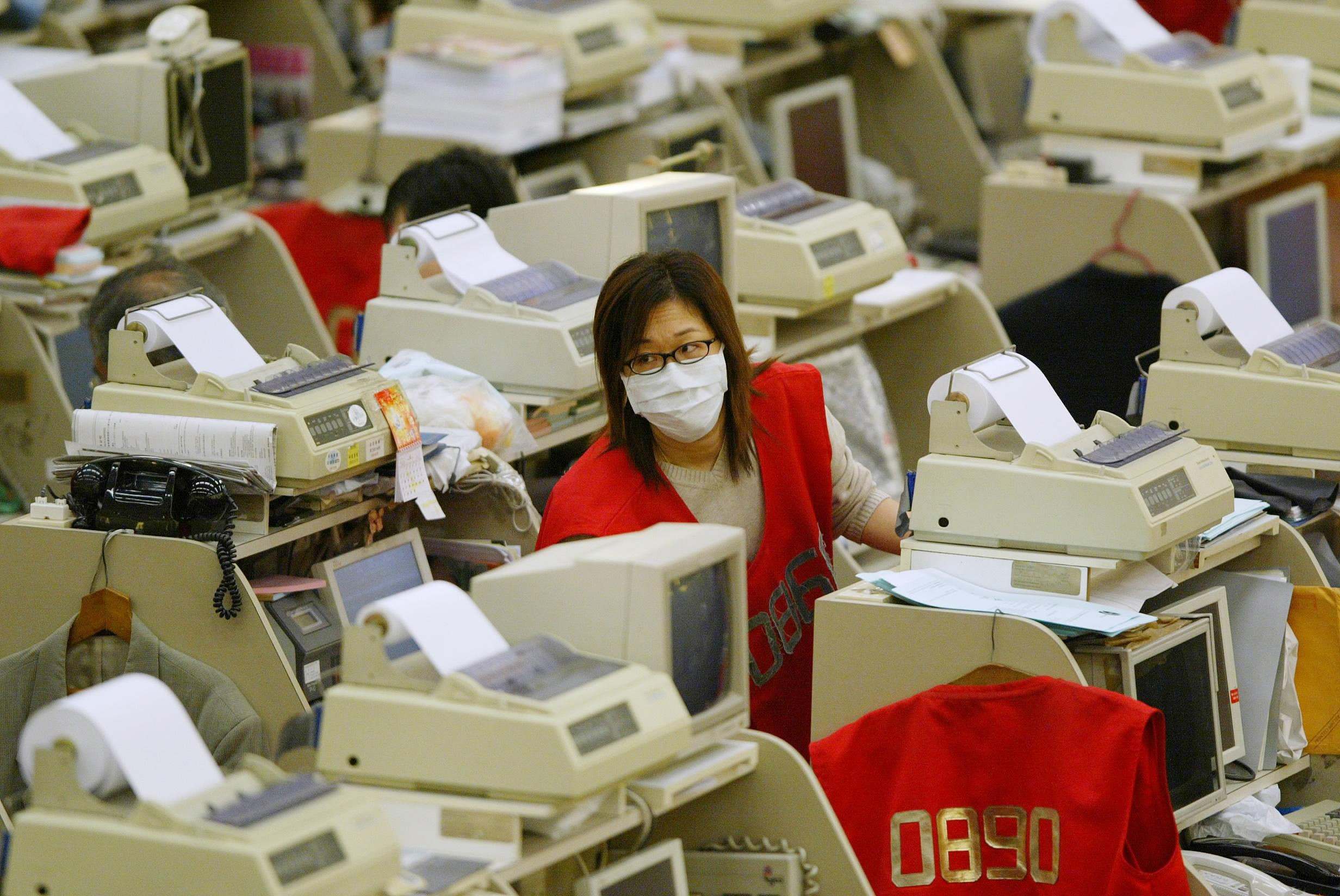
Business
15:22, 27-Oct-2017
Hong Kong stock trading floor closure marks end of an era
by Nicholas Moore

Hong Kong will mark the end of an era on Friday, with the closure of the Hong Kong Exchange trading hall and the growth of electronic trading drawing a line under decades of history, which saw the Special Administrative Region emerge as one of the world’s leading financial hubs.
Prior to closing for the final time, the current trading hall, which opened in 1986, has seen the number of stockbrokers in iconic red jackets and staff working on the floor slump to around 30.
That's down from a heyday that saw some 900 traders running around the hall, shouting down phone lines amid the hum of fax machines, scribble of pens and thud of red stamps on completed trades.

The red jackets worn by brokers became symbolic of the Hong Kong stock exchange. /VCG Photo
The red jackets worn by brokers became symbolic of the Hong Kong stock exchange. /VCG Photo
Everything has changed, with the advent of digital technology signaling a future where automation and artificial intelligence will likely lead the way in stockbroking.
Computers can now keep an eye on just about every trade happening anywhere in the world and record everything, analyzing big data to buy or sell shares in just a fraction of a second.
Human brokers of course still have an important role to play – Hong Kong still has a 500-strong community of traders – but this closure follows similar shutdowns in Singapore and Tokyo, while historic futures trading pits in New York and Chicago also closed in 2015.
Wall Street starts trading every day at 09:30 a.m. with the traditional ringing of the opening bell, and there is still nostalgia attached to the hustle and bustle of the trade floor.
Hong Kong first set up a stock exchange in 1891, and the current trading hall survived the 1987 Black Monday crash, the 1997 Asian financial crisis and SARS, but it has finally been ousted by technology – in 2014, less than 0.2 percent of Hong Kong trades were made on the floor.

The trading floor continued to operate in 2003, despite the SARS epidemic. /VCG Photo
The trading floor continued to operate in 2003, despite the SARS epidemic. /VCG Photo
Talking to South China Morning Post, Christopher Cheung Wah-fung, one of the last traders at work on the Hong Kong exchange floor, said “I feel sad to see it go as I grew up there. I wore one of those famous red jackets and ran around the hall as a trader in my younger days.”
David Tung, an 88-year-old who spent 70 years working as a broker in Hong Kong, told South China Morning Post of his sadness at the closure, adding that “electronic trading lacks the human touch.”

Many of the Hong Kong brokers had worked on the floor their entire lives. /VCG Photo
Many of the Hong Kong brokers had worked on the floor their entire lives. /VCG Photo
In August, a spokesperson for Hong Kong Exchanges and Clearing, which is in charge of the trading floor, said that the building would be preserved as a “financial showcase” for Hong Kong’s history as a global trading hub.
The Shanghai Stock Exchange (SSE) continues to operate the Asia-Pacific region’s largest trading floor, a 3,600 square meter space that has been open since 1990. While the SSE has what it calls “the largest domestic satellite and optical fiber communication network,” authorities have sought to rein in the role of technology in recent years, over fears that high-frequency trading bots were causing market instability.
Citing the China Securities Regulatory Commission, Xinhua says that “program trading, a computerized automated trading scheme used by investors to trade large quantities of shares, can sometimes be abused to bring more volatility to the market and contributed to the recent collapse of Chinese stocks.”
Apprehension towards technology conducting high-speed trades means that the SSE will likely still be manned by human brokers for the time being.

The Shanghai Stock Exchange trading floor, the Asia-Pacific region's largest. /VCG Photo
The Shanghai Stock Exchange trading floor, the Asia-Pacific region's largest. /VCG Photo
While Hong Kong’s long history as a financial center is well known, traces of Beijing’s past as an early-20th century trading hub can still be found, with the first stock exchange set up by and run exclusively by Chinese people still standing in the city center.

The old stock exchange in Beijing, which dates back to 1918, is now home to several families in the heart of the city. /VCG Photo
The old stock exchange in Beijing, which dates back to 1918, is now home to several families in the heart of the city. /VCG Photo
The trading floor, which opened in the Republic of China era in 1918, is now home to several families in the ancient Qianmen area – traditionally the capital’s center of commerce, as traders led camels packed with goods through the gates of the ancient walled city.

SITEMAP
Copyright © 2018 CGTN. Beijing ICP prepared NO.16065310-3
Copyright © 2018 CGTN. Beijing ICP prepared NO.16065310-3